In Japanese, the dakuten 濁点, sometimes called tenten てんてん, chonchon ちょんちょん, or dakuonpu 濁音符, are diacritics, accents used on kana to represent a "voice sound," a dakuon 濁音.
They look like two small diagonal marks ゛ on the top right of the kana. For example: ga が is ka か with dakuten.
The dakuten are applied to the consonants to turn them into voiced consonants. It's used to turn K-S-T-H into G-Z-D-B. The diacritic that turns H into P, and looks like a circle ゜, is called handakuten 半濁点, literally "half" dakuten.
Different Words
Two words with the same kana are different words if one has dakuten and the other does not. For example:
- shinsha
新車(しんしゃ)
New car. - shinja
信者(しんじゃ)
Believer. - jinsha
仁者(じんしゃ)
Person of virtue. - jinja
神社(じんじゃ)
Shinto shrine.
Rendaku
Sometimes the first syllable of a word becomes voiced when it's suffixed to another word. This phenomenon is called rendaku 連濁. For example:
Peculiar Usage
There are a few atypical ways dakuten is used.
ぢ and づ
The di ぢ and dzu づ are pronounced identically to ji じ and zu ず in standard Japanese, as spoken in Tokyo 東京. In other parts of Japan there are regional dialects in which they're all pronounced identically, or all pronounced differently.
See yotsugana 四つ仮名 for details.
ヴ
The vu ヴ is an u ウ with dakuten.
This character isn't found in native Japanese words, only in loan-words, which would be normally spelled with katakana. On a computer, it can only be typed in katakana, not in hiragana, although you could type the dakuten separately: う゛.
あ゙
The a´ あ゙ (or ア゙, あ゛) is an a あ with dakuten.
This character only exists in writing and doesn't represent an actual different vowel.(福居誠二, 2017:p69,n32)
- "a´" nado wa {hyouki nomi de ari}, {genjitsu no hatsuon wo arawashite-iru} mono dewanai.
「あ゛」などは表記のみであり、現実の発音を表しているものではない。
Things like "あ゛" {only have written representation, and} {don't represent a real pronunciation}.- genjitsu - "real," as in found in reality, in practice.
This character isn't found in any actual word, but does have some uses, specially in manga, light novels, etc.
The a´ あ゙ can be used instead of ha は as an interjection, like "huh? What are you talking about?!"
Presumably, it's supposed to be ha without the consonant, but a あ alone sounds too soft to transmit the bewilderment or indignation of the character, so a あ with a dakuten is used instead. For example:
- Context: Gojou Satoru 五条悟, who doesn't like to obey rules, is told to obey societal norms.
- ichininshou "ore" wa {yameta} hou ga ii
一人称「俺」はやめた方がいい
[It] would be better if {[you] stopped} [using] the first person pronoun "ore."- ore - a masculine first person pronoun that's not used in formal situations.
- a´?
あ゙?
Ah?- What did you just say to me???
- toku ni {me-ue no} hito no mae dewa ne
特に目上の人の前ではね
Specially in front of [your] superiors, [alright].- {me-ue no} hito
目上の人
People [who] {are above you}.
[Your] superiors.
- {me-ue no} hito
- {Tengen-sama ni au kamoshirenai} wake dashi
天元様に会うかもしれないわけだし
{[We] might meet Tengen-sama}, [after all].- In this series, Tengen-sama is an important person, as hinted by the fact the ~sama suffix is used with their name.
- "watashi", saitei demo "boku" ni shi na
「私」最低でも「僕」にしな
Use "watashi," at very minimum "boku," [okay].
Screaming or Crying
When a character is screaming angry, or bawling, crying, their voice will be different from normal, and they'll pronounce words differently from normal. To represent this, authors may sometimes add a dakuten to every single character, or add them randomly.
You can end up with goro´zu こ゛ろ゛す゛ as a very angry way to say korosu 殺す, "[I] will kill [you]," for example."
- Context: Agatsuma Zen'itsu 我妻善逸 runs away from an oni 鬼.
- a´~~' (kitanai kouon)
ア゛ーーッ(汚い高音)
Aahhhhh! (filthy high-pitched tone.)- The text in parentheses describes Zen'itsu's iconic, utterly obnoxious voice.
- konaidee!!
来ないでェ!!
Don't come!! (literally.)
Go away!! - konaide-kuree!!
来ないでくれェ!!
Please go away!! - yamete~~'!!!
やめてーーッ!!!
Stop!!!
ゞヾ〴〵
Some of the less common iteration marks have dakuten versions, which allows them to express rendaku, specially in words that feature reduplication, such as mimetic words.
Predecessor
It seems the modern side dots in the furigana space used for emphasis were a predecessor for the dakuten.(小松, 1971:146)
- dakuon-gana ni subete dakuten ga kuwaerareru you ni natta no wa zutto ato no jiki no koto de atte
濁音仮名にすべて濁点が加えられるようになったのは、ずっとあとの時期のことであって
The practice of putting accent marks (dakuten) in all accented kana happened much later. - sono katoki ni kenten ni yoru fudakuten ga mochiirareteiru koto
その過渡期に圏点による不濁点が用いられていること。
In the transition period the side-dots were used.- kenten - literally "circle dots," another term for bouten 傍点, "side dots."

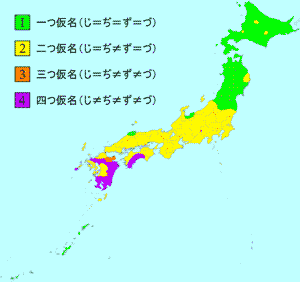
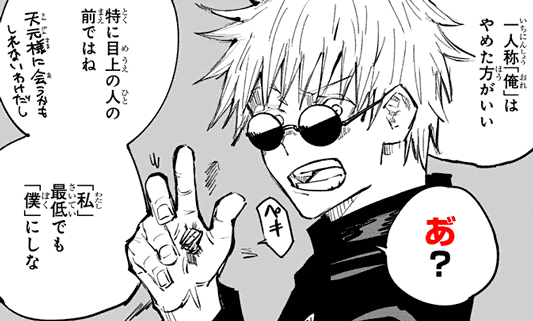
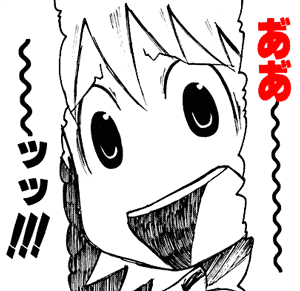
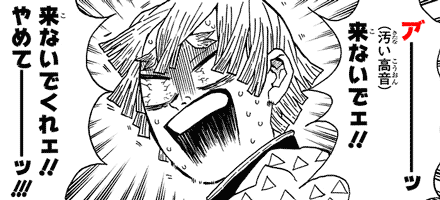
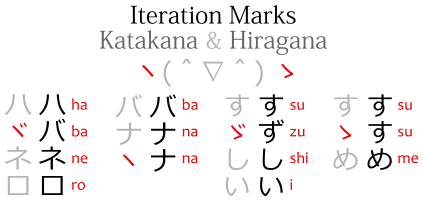
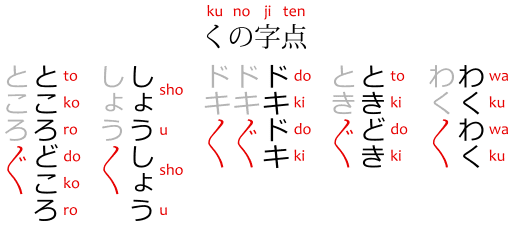
No comments: